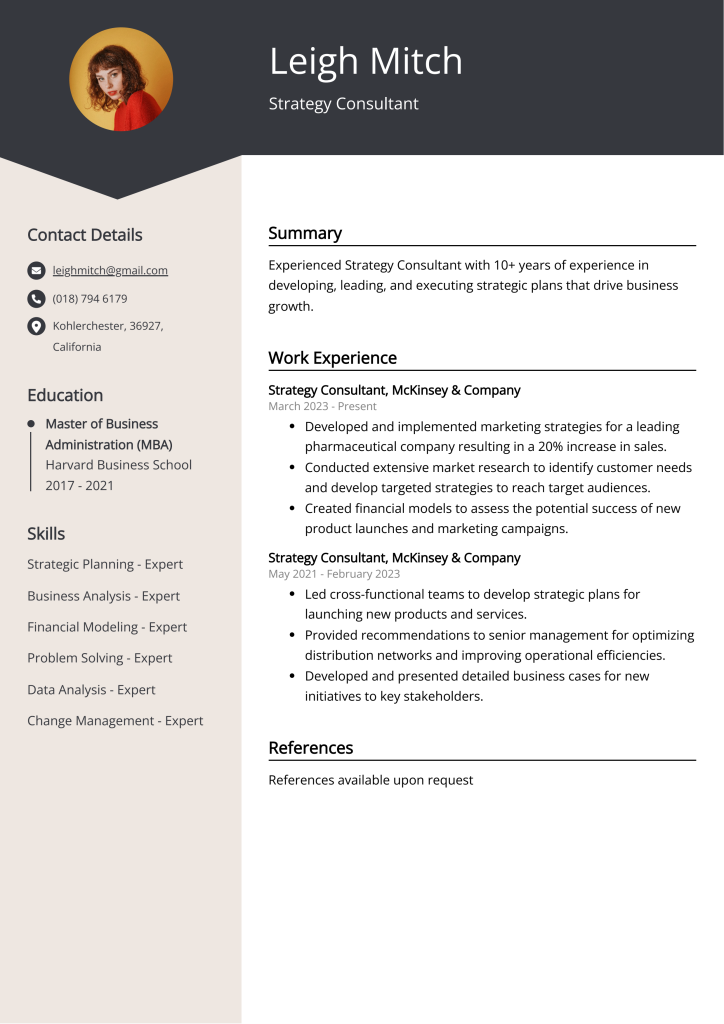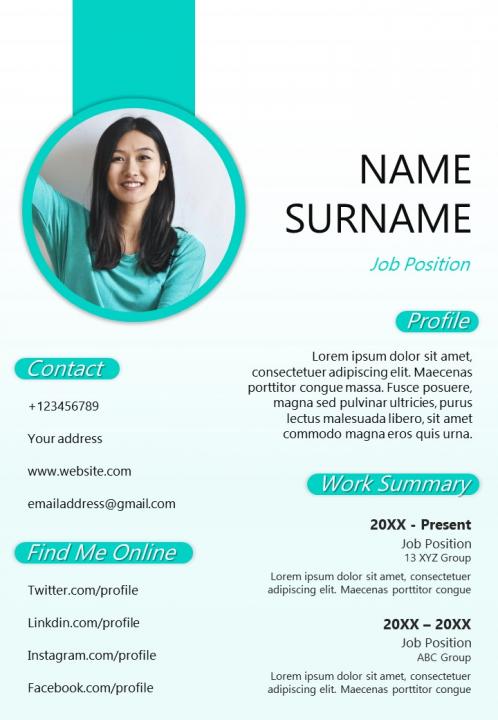Your resume is your first opportunity to create a professional impression. A well-structured, visually clean resume helps recruiters quickly scan and absorb key qualifications. Design, layout, and formatting are just as important as the content you include.
With just a few seconds to impress, your resume must grab attention while maintaining readability. Design choices, such as spacing, font, and section placement, play a critical role in your resume’s performance. Recruiters and applicant tracking systems (ATS) both benefit from clarity and simplicity.
Using editable templates ensures that your resume follows best practices without requiring you to build one from scratch. These templates allow you to focus on customizing content rather than worrying about structure. They also help maintain consistency across different application versions.
Prioritize Simplicity in Visual Layout
Use clean formatting that supports readability
A clean resume layout helps employers focus on your qualifications without distractions. Neutral tones, consistent line spacing, and standard margins improve visual flow. Avoid decorative elements that reduce professionalism. White space should be used strategically to separate content. Simplicity reinforces clarity and a structured appearance.
Choose fonts that ensure legibility on screens
Fonts play a key role in how easily your resume is read on digital platforms. Choosing the right fonts ensures your resume remains clear and professional across different devices. Consider these key points for font selection:
- Use sans-serif fonts, such as Arial or Calibri, which remain sharp and legible on screens.
- Limit font styles to one for headings and one for body text to maintain consistency.
- Keep font size between 10 and 12 points for optimal readability without overcrowding.
Avoid visual clutter and excessive symbols
Too many icons, shapes, or lines distract from core resume content. While a few visuals may support your branding, overuse can lead to confusion. Ensure that alignment is consistent throughout every section. Keep your bullet points concise and use them to highlight achievements only. Simplicity supports a more professional image.
Structure Sections for Easy Navigation
Use standard headers to organize content
Headers like “Experience” or “Skills” are widely recognized and understood. Avoid non-traditional labels that confuse readers or ATS tools. Consistent headers guide the reader’s eye through your resume in a logical manner. These sections help prioritize what hiring managers are looking for. Clarity in headers increases resume scanability.
Maintain chronological flow in experience listing
Start with your most recent job and work backward through your history. This format aligns with recruiter expectations and shows your career growth. Each role should include a job title, employer, start and end dates, and location. Chronological order also simplifies the structure of your resume. It gives an easy-to-follow timeline of experience.
Highlight achievements under each role
Using bullet points to showcase your achievements makes your resume easier to read and more impactful. Focus on concrete results and active language to demonstrate your value clearly:
Begin each bullet with a strong action verb that clearly reflects your responsibilities and contributions.
Include measurable results such as percentages, revenue growth, or efficiency improvements to quantify your impact.
Align Design with Applicant Tracking Systems
Avoid tables and graphic-heavy formats
Many ATS tools struggle to parse designs that include columns, tables, or text boxes. These elements can distort how your resume is read digitally. Stick with single-column formats for better compatibility. Use basic design tools instead of third-party visual features. Clean formatting ensures no content is missed by software.
Optimize with relevant keywords
Include job-specific keywords that match the role you’re applying for. These terms help your resume appear in ATS search filters. Pull terminology directly from the job description. Keywords should appear naturally in your achievements and skills sections. Don’t overstuff balance optimization with flow.
Save incompatible file formats
PDF is the safest option for maintaining the layout, but some systems may request DOCX. Always double-check job application requirements before submitting your application. Some platforms struggle to read PDFs, while others preserve them best. Keeping both versions ensures readiness. Proper formatting increases file accessibility.
Read More: Professional Resume Strategies and Templates
Showcase Personal Brand with Visual Elements

Add a touch of personality using a subtle design
Adding a touch of personality to your resume can make it stand out while still maintaining a professional appearance. Subtle design elements create a unique impression without overwhelming the content. Use these techniques thoughtfully to enhance your brand.
- Add a hint of color or a personal monogram to give your resume character
- Use branded headers, color accents, or light separators to add polish and structure to your content.
- Maintain a tasteful and minimalist style, avoiding gimmicks and flashy designs that distract.
Use consistent formatting across all documents
If you’re submitting a cover letter or portfolio along with your resume, ensure that the formatting matches. This creates a cohesive presentation of your brand. Fonts, colors, and spacing should remain uniform. Minor inconsistencies create a disjointed impression. A consistent brand shows strong attention to detail.
Integrate a professional summary near the top of the document.
Place a short, impactful summary at the top of your resume. This gives recruiters immediate context about your background. Focus on your core skills, key achievements, and industry focus. Keep it tailored to the position you’re applying for. This section acts as your professional elevator pitch.
Editable Templates for Various Job Levels
Templates for entry-level professionals
Entry-level templates prioritize simplicity and clarity to highlight foundational qualifications. These designs help recent graduates or those new to the workforce effectively present their skills. Key features include:
- Emphasis on academic history, internships, and volunteer experience
- Clear, uncluttered layout avoiding complex design elements
- Focus on transferable skills and relevant coursework for easy readability
Templates for mid-career applicants
Mid-level resumes must show progression, leadership, and problem-solving experience. Use templates that highlight promotions and measurable success. Incorporate multiple sections, such as certifications and technical proficiencies. Ensure there is a visual balance between design and detail. Bullet points should showcase high-impact results across roles.
Templates for executives and specialists
Executive templates require a more sophisticated design, with extra white space and minimal colors. Focus on strategic decisions, large-scale outcomes, and high-level projects. Use bold headers, expanded leadership sections, and specialized accomplishments. The layout should remain sleek while emphasizing authority. Achievements should dominate each section.
Resume Mistakes to Avoid
Using inconsistent formatting or spacing
Inconsistencies in font, spacing, or layout indicate a lack of attention to detail. Review your entire document for alignment and uniformity. Sloppy formatting can distract and detract from a professional appearance. Use consistent indentation and line spacing throughout your document. A polished layout builds recruiter trust.
Overstuffing the resume with information
Including too much irrelevant information can overwhelm recruiters and dilute your key qualifications. To keep your resume effective, focus on what truly adds value to your career goals:
- Prioritize relevant skills and experiences that align with the job for which you’re applying.
- Remove outdated software, certifications, or unrelated work history.
Using outdated or irrelevant information
Information from over 10 years ago, unless critically important, can often be removed. Focus on recent roles that showcase modern skills. Remove irrelevant personal details or experiences. Keep only what is directly related to the task at hand. Current, focused content performs better.
Customizing Templates Based on Role
Tailor content for each application
No two jobs are the same, and your resume should reflect that. Use the job description to guide your content strategy. Adjust bullet points and keywords to match employer expectations. Personalization increases your relevance and appeal. ATS tools favor role-specific resumes.
Adjust tone and design by industry
Different industries have unique expectations for the tone and design of a resume. Matching your resume style to the employer’s culture improves your chances of making a positive impression.

- Creative roles often welcome bold formats and greater design freedom to showcase personality.
- Technical or corporate industries typically prefer clean, formal templates with minimal distractions.
Use different versions for online and print
Online resumes should be optimized for screen readability with clean formatting. Print versions may require specific paper sizes or monochrome color schemes. Keep two formats ready for different application channels. This dual strategy improves versatility. Matching design to delivery method is key.
FAQs
What is the best resume format for job seekers?
The reverse chronological format is best for clarity and flow. It helps highlight career progression in a logical and orderly manner.
Can I use color in my resume design?
Yes, but stick with muted tones for a professional look. Overuse of color may distract or look unpolished.
Are resume templates compatible with ATS software?
Only if they use clean layouts and avoid columns, tables, or symbols that disrupt parsing.
What file format should I use when submitting my resume?
PDF is ideal for visual consistency. DOCX is better for ATS readability.
How long should a resume be for experienced professionals?
Two pages are suitable for professionals with seven or more years of experience. Focus on relevance over length.
Conclusion
A thoughtfully designed resume boosts visibility and reinforces professionalism. It guides the reader through your skills and achievements clearly, without visual clutter. Tailoring your resume to the specific job role and using ATS-friendly templates increase the chances of getting noticed. Consistent formatting, relevant keywords, and clean layouts make a substantial impact on both recruiters and software systems. By avoiding common errors and focusing on clarity, your resume can stand out in a crowded job market and improve your chances of landing interviews.

